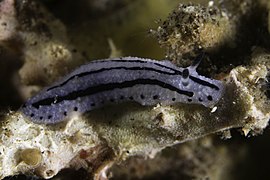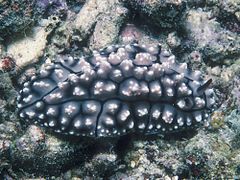
Rostanga is a genus of sea slugs in the family Discodorididae. Some sources, such as The Sea Slug Forum still classify Rostanga in the family Dorididae.
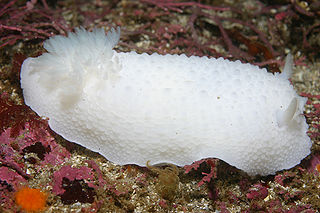
Doridoidea, commonly known as dorid nudibranchs, are a taxonomic superfamily of medium to large, shell-less sea slugs, marine gastropod mollusks in the clade Doridacea, included in the clade Nudibranchia.

Aldisa is a genus of sea slugs, dorid nudibranchs, marine gastropod molluscs in the family Cadlinidae.
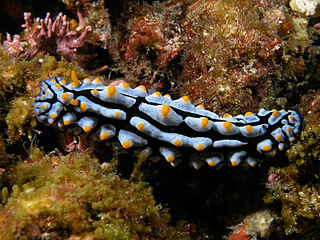
Phyllidiidae is a family of sea slugs, dorid nudibranchs, marine gastropod mollusks in the superfamily Phyllidioidea.
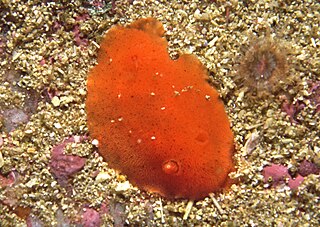
Discodorididae is a taxonomic family of sea slugs, specifically dorid nudibranchs, marine gastropod mollusks in the superfamily Doridoidea.

Doriopsilla is a genus of sea slugs, dorid nudibranchs, shell-less marine gastropod molluscs in the family Dendrodorididae.

Baptodoris is a genus of sea slugs, dorid nudibranchs, shell-less marine gastropod mollusks in the family Discodorididae.

Platydoris is a genus of sea slugs, dorid nudibranchs, shell-less marine gastropod mollusks in the family Discodorididae. These nudibranchs are large and often brightly coloured, but normally live concealed beneath rocks or loose coral, feeding on sponges. During the night they become more active, searching for new food sources or mates. Many species were described in the 19th century and a revision in 2002 added six new species.

Phyllidia is a genus of sea slugs, dorid nudibranchs, shell-less marine gastropod molluscs in the family Phyllidiidae.
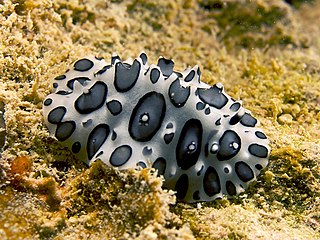
Ceratophyllidia is a genus of sea slugs, dorid nudibranchs, shell-less marine gastropod molluscs in the family Phyllidiidae.

Phyllidiella is a genus of sea slugs, dorid nudibranchs, shell-less marine gastropod molluscs in the family Phyllidiidae.

Phyllidiopsis fissurata is a species of sea slug, specifically a dorid nudibranch, a shell-less marine gastropod mollusk in the family Phyllidiidae.
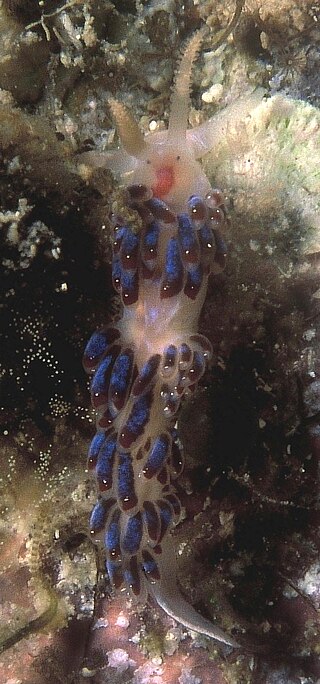
Facelina is a genus of sea slug, an aeolid nudibranch in the family Facelinidae.
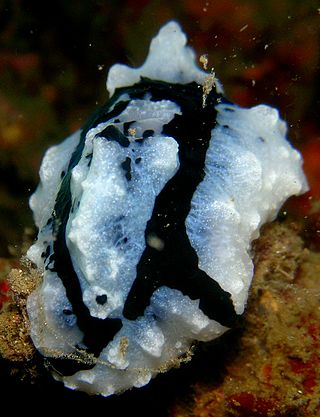
Phyllidiopsis shireenae is a species of sea slug, a dorid nudibranch, a shell-less marine gastropod mollusk in the family Phyllidiidae.

Phyllidia rueppelii is a species of sea slug, a dorid nudibranch, a shell-less marine gastropod mollusk in the family Phyllidiidae.

Phyllidiella meandrina is a species of sea slug, a dorid nudibranch, a shell-less marine gastropod mollusk in the family Phyllidiidae.

Phyllidiopsis phiphiensis is a species of sea slug, a dorid nudibranch, a shell-less marine gastropod mollusk in the family Phyllidiidae.

Phyllidiopsis sphingis is a species of sea slug, a dorid nudibranch, a shell-less marine gastropod mollusk in the family Phyllidiidae.

Phyllidiopsis pipeki is a species of sea slug, a dorid nudibranch, a shell-less marine gastropod mollusk in the family Phyllidiidae.
Phyllidiopsis bayi is a species of sea slug, a dorid nudibranch, a shell-less marine gastropod mollusk in the family Phyllidiidae.


